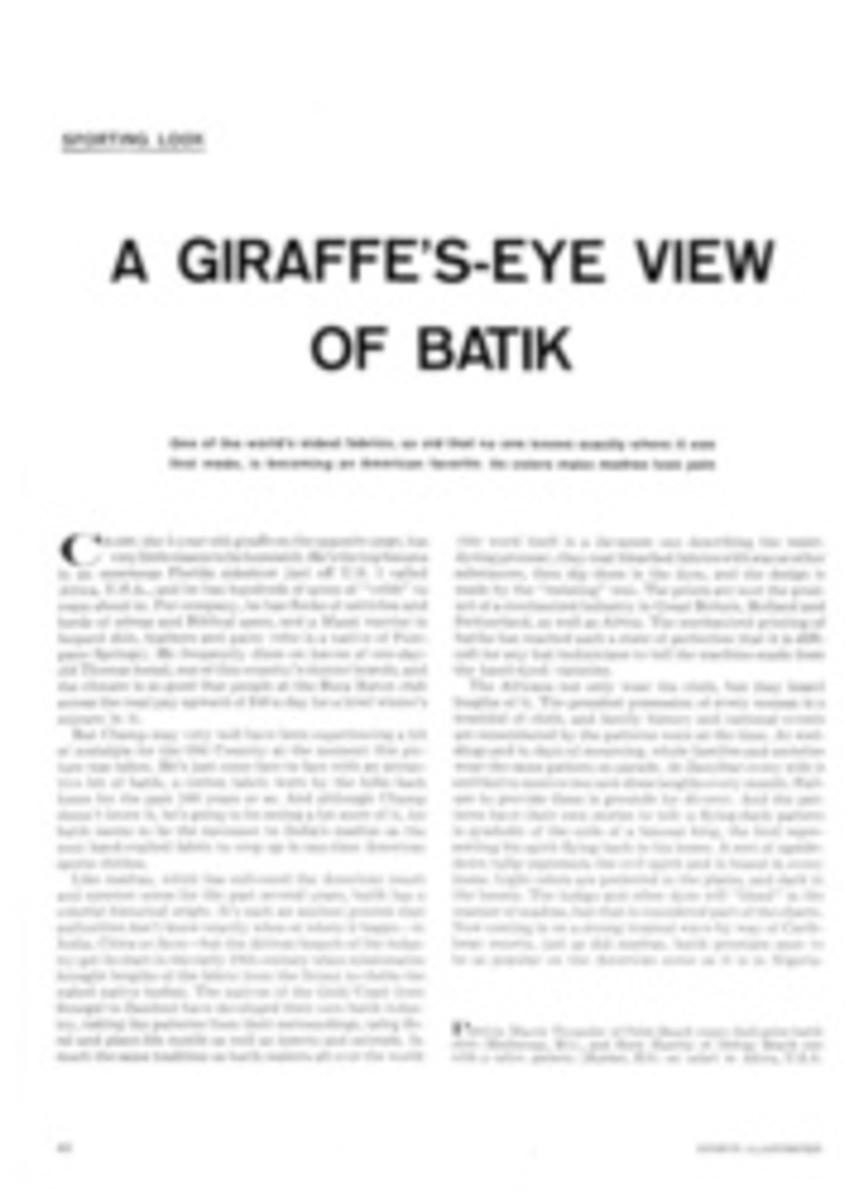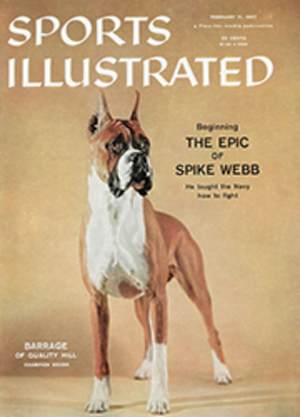
OLDTIMERS' PARADE
At the end of the third round, when he posted a 66 to remain within two strokes of the Phoenix Open lead last week, Lloyd Mangrum leered lovingly at the first-place medallion and cracked: "If I can hold these old bones together one more day, I'll give these young fellers a real scare."
But what was really scaring the young fellows in the troupe as the winter golf circuit approached the midway point was the way not only Mangrum but all the old bones of golf were holding together. It was getting tough for a player under 30 to cash a check. The Los Angeles Open was won by Doug Ford; the Caliente Open was won by Ed Furgol. But when the Palm Springs Open was won for the second straight time by Jimmy Demaret, the younger element began to look nervously over both shoulders for fear Ben Hogan would find the easy money too much to resist. "Demaret," moaned one, "goes back to hickory sticks."
What was really hurting the Young Guard, which has been waiting in the wings so long now it may find itself lapped by an even younger guard, was the deceleration of Gene Littler. Littler is the young man (26) who had won some half-dozen tournaments even before he got acquainted with the rest of the players on the pro circuit.
But Littler, who had brought to the game the stolid serenity of a contemplative monk and the swing so compact and parsimonious that the belief was that nothing could ever happen to it, has suddenly been hard-put to survive the second-round cut. At the Bing Crosby Open he picked up in disgust for the first time in his professional career. At Los Angeles he skidded to a 76 last round. At Caliente he had a 77. At Palm Springs he opened with a 76.
As the Phoenix Open (which he won in 1955) rolled around, Littler's problem was Topic A around the clubhouse, the subject of casual conversation and in-print analysis. The consensus of the competing pros was that Littler had developed a hitch in his backswing, and that it was too bad but on the whole they were glad of it. "When you can chip and putt the way that kid can, who needs a backswing anyway?" growled one competitor.
Littler's own face darkened when he was approached on the subject. "Everybody goes through a little period where their swing may change a little bit," he commented bitterly. "I'm working on some things now, trying to get my swing back to where it was. It's highly overexaggerated."
For the first two rounds it seemed it was, at that. Littler scored a 69 and a 67, good enough to rate second place, one stroke away from the lead. But keen students of the game were aghast at the way he scored them. On his second round, for instance, he was in so many traps he couldn't have had more sand in his shoes if he had spent the day picknicking on Coney Island, and his score was largely due to an explosion shot from a trap on the last hole which hit the pin on the fly and fell down for an eagle 3. Fellow pro Billy Casper was impressed as much as the cheering crowd and ran over to the practice green where his fellow pros were putting. "Greatest shot I've ever seen," crowed Casper. Pros Cary Middlecoff and Mike Souchak looked at him sourly. "Probably skulled it," correctly guessed Middlecoff. "If it don't hit the pin, it's in the clubhouse," protested Souchak.
Littler, meanwhile, was posing for the press, with his hat turned backward and a look of awe on his face; but the prophets shook their heads. Littler had missed more greens than a weekend duffer, and the opinion was that whatever had soured the picture swing could not be sweetened by a diet of miraculous chips and wedges. Littler had found out how tough the game of golf is, went the refrain in the locker rooms.
The Old Guard, who had found it out hundreds of tournaments ago, moved in for the kill. Terrible Tommy Bolt, of course, withdrew, pleading a severe case of bursitis, complicated, the wiseacres noticed, by an attack of double bogeys. But Dr. Cary Middlecoff announced in mid-tournament that he had just been given the secret of putting by an old friend, George Low, and proved it the next day by going out and firing a 65. Mangrum sauntered around like an old gaffer warming himself in the sun, but he was dead to the pin on his second shots, and even Johnny Bulla, who now putts left-handed and hasn't won a tournament since the war years, was in contention with two sub-par rounds.
OLD GUARD STOPPED
The Young Guard at the last had to pin its faith on portly Billy Casper Jr., a San Diegan who slashes at the ball as viciously as a meatcutter in a hurry but who one-putted half the holes for a 65 on the third round; on Mike Souchak, whose shaggy bulk and football strut belie the fact he has one of the most graceful swings on the circuit today; and on the onetime National Amateur Champion, Arnold Palmer, who opened with a 66 and hung on by his teeth thereafter.
It could be—and was—argued that the youngster who wasn't there at Phoenix is the real current threat to the hegemony of the Middlecoffs, Mangrums, Fords, et al. Ken Venturi, who almost stole away with the Masters last year and who carried the Palm Springs tourney to a playoff, dropped out with a pulled muscle on the eve of Phoenix.
On the final day, of course, it was 25-year-old Bill Casper who managed to halt the old folks. It was one of those days when not even an earth slide could have thrown his putts off line, and he finished with a smart 67 for a four-round card of 271.
But though Casper won, the oldsters were still conspicuous by their presence at the cashbox. Middlecoff was tied for second, and Old Bones Mangrum himself held together for fourth. And with the big prizes and tougher eastern courses looming ahead, the old-timers intended to go right on being conspicuous.

